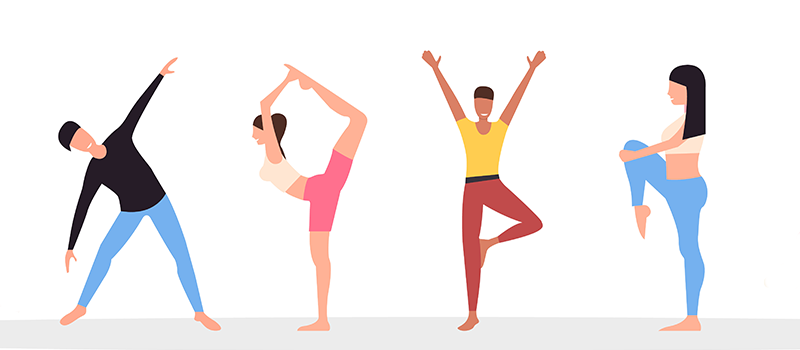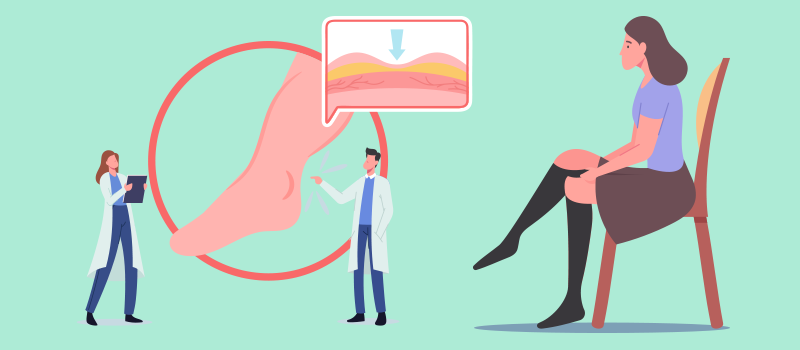What’s the Buzz
The Bee Healthy Blog
Exercises to Help Prevent Blood Clots

Certain exercises can help reduce the risk of blood clots. But why are these exercises important?
Deep vein thrombosis (DVT) is a condition of the circulatory system. Specifically, it refers to a blood clot in a large vein that typically forms in the lower leg. The medical term for it is venous thromboembolism (VTE).
A blood clot can partially or fully block blood flow in blood vessels. If left untreated, a blood clot can break off and travel via the bloodstream to the lungs, where it can cause a blockage in blood flow - this is called pulmonary embolism (PE), and it can lead to life-threatening complications.
The Centers for Disease Control and Prevention (CDC) and the National Blood Clot Alliance estimate that some 900,000 Americans suffer from DVTs every year. Venous thromboembolism causes 100,000 deaths annually - this is more than motor vehicle accidents, AIDS, and breast cancer combined. Yet, these deaths from dangerous blood clots are preventable. One of the ways to accomplish this is with exercises that improve circulation.
What are the risk factors for DVT?
Most people associate DVT with airplane travel; however, the truth is that inactivity of any kind increases your risk of developing a blood clot. It can include spending long hours working at a desk or sitting on a couch watching TV. This is because when the calf muscles don’t contract, the blood circulation in the lower extremities slows down, and it increases your risk of blood clots.
Besides a sedentary lifestyle, other more important risk factors for DVT include older age, being overweight or obese, cancer, prolonged bed rest, pregnancy, birth control pills, smoking, and a family history of clots.
How do you prevent blood clots naturally?
Certain lifestyle changes, such as getting regular exercise, quitting smoking, and maintaining a healthy weight, can reduce your risk of blood clots. Even some simple stretching exercises throughout the day can help keep blood moving and prevent DVT.
Can exercise prevent blood clots?
Yes, a regular exercise routine can help to reduce your risk of blood clots and prevent DVT complications. As mentioned, long periods of inactivity increase your risk of DVT.
Does walking help prevent blood clots?
In healthy people, regular physical activity such as walking can help to ensure good circulation and prevent DVT.
However, certain people are at increased risk of deep vein thrombosis, such as people admitted to the hospital. In such individuals, doctors may prescribe medicines such as heparin and enoxaparin (Lovenox) - they are called blood thinners - for preventing blood clots.
There are other ways of keeping the blood pumping during prolonged inactivity in hospitalized individuals. These include sequential compression devices (SCDs) and/or compression stockings that squeeze the leg muscles and keep blood flowing.
If you are hospitalized or on prolonged bed rest, it’s important to carefully follow professional medical advice to avoid life-threatening complications of deep vein thrombosis and pulmonary embolism.
How much exercise do you need to prevent blood clots?
Doctors recommend regular exercise, ideally for a minimum of 30 minutes every day, to improve circulation. Exercise also helps to keep you at a healthy weight (being overweight or obese is a risk factor for DVT).
Exercises to prevent deep vein thrombosis (blood clot in the legs)
Walking
It’s important to keep moving throughout the day. Try to incorporate some leg exercises into your daily routine. If you’re stuck to a desk, take short walks around your office or home every couple of hours. This will keep the blood pumping and reduce your risk of blood clots. The same is true for long flights or road trips. On flights, get up from your seat or stretch in place whenever possible. During road trips, make regular stops to stretch your legs and get your blood circulation going.
Seated Exercises
If you can’t get up and walk around, do 5-10 repetitions of these chair exercises every half an hour.
Foot Pumps: Keep both feet flat on the floor. Raise your toes and heels off the floor alternately, holding for a count of three.
Ankle Circles: Lift both feet off the floor and make circles in the air with your toes.
Leg Raises: If space allows, raise the left foot and stretch your leg straight until your foot is parallel to your knee. Repeat on the other side. If space is cramped, such as on an airplane, lift the left knee to your chest. Repeat with the other leg.
Shoulder Rolls: Blood clots are less common in the arms, but they can occur. To keep blood flowing in your upper body, perform shoulder rolls by raising your shoulders and rotating them forward, followed by rotating them in the reverse direction.
Stretching Exercises
If you are bed-bound for long periods after surgery or due to an injury or illness, some simple stretches and controlled movement while lying down can reduce your risk of forming clots. These exercises include foot pumps, similar to what you would do in a chair, but by flexing your toes towards your head and away from your head. You can also do thigh stretches by lying on your back, keeping your legs straight, raising one leg at a 90-degree angle, and gently pulling it toward you with your arms. Another good stretch lying down is to lay flat on your back and gently pull your right leg or left leg so that your knee comes towards your chest. You should hold each stretch for 15-30 seconds.
Wrapping Up
Certain factors can increase your risk of DVT. If you are at increased risk of forming clots, talk to your doctor about lifestyle changes that can reduce your risk. You should know that blood clots pose an immediate threat and require emergency medical attention. If you notice any symptoms of deep vein thrombosis (DVT) or pulmonary embolism (PE), such as pain and swelling in one leg or shortness of breath and chest discomfort, contact your doctor immediately or go to the nearest emergency room. Regular exercise, including some of the exercises mentioned above, is the best way to reduce your risk of dangerous blood clots.
References:











SOCIAL